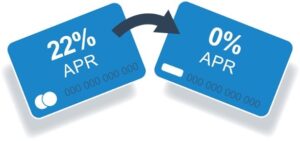Debt is a four-letter word that many of us are all too familiar with. Among the various forms of debt, credit card debt is one of the most prevalent. The convenience of credit cards, coupled with their high-interest rates, can lead individuals into a spiraling pit of debt if not managed properly. If you find yourself burdened by credit card debt, don’t despair. There are several popular and safe paths to help you navigate your way back to financial stability.
-
The Snowball Method:
How It Works: List out all your credit card debts from the smallest balance to the largest. You make the minimum payments on all your debts but put any extra funds towards the card with the smallest balance. Once that is paid off, move on to the next smallest balance.
Why It’s Popular: This method provides quick psychological wins, as you eliminate smaller debts faster. These early victories can motivate you to stick with your debt repayment plan.
-
The Avalanche Method:
How It Works: List your debts from the highest interest rate to the lowest. Make minimum payments on all cards but dedicate extra money to the card with the highest interest rate. After it’s paid off, tackle the next highest rate.
Why It’s Popular: Mathematically, this method can save you the most money over time because you’re tackling high-interest debt first.
-
Balance Transfer Credit Cards:
How It Works: Transfer your existing credit card balances to a new card that offers a 0% introductory APR for a specific period. This can give you time to pay off the balance without accruing interest.
Caution: Ensure you can pay off the balance within the introductory period. Also, watch out for balance transfer fees.
-
Credit Counseling and Debt Management Plans (DMPs):
How They Work: Credit counseling agencies can help you create a budget and provide education about credit management. If necessary, they might suggest a debt consolidation program where predetermined benefits with your creditors can gain you lower interest rates and monthly payments.
Benefits: A structured and professional way to handle debt. Well-executed debt consolidation programs can drastically reduce the time it takes to become debt-free and can potentially save you thousands of dollars in interest.
-
Personal Savings:
While it might sound counter-intuitive to use savings to pay off debt, the logic is simple: the interest rate on savings accounts is usually much lower than the interest charged on credit card debts. By using your savings, you could save more in avoided interest than you’d earn by keeping the money in the bank.
Safety First
When paying down credit card debt, always be wary of schemes or offers that sound too good to be true. Avoid payday loans or any high-interest borrowing. Also, always prioritize keeping up with essential bills and your basic living expenses.
Remember, while it’s essential to pay off debt, it’s equally crucial to build and maintain a savings habit for future emergencies and goals. A balanced approach will serve you well in the long run. And once you’ve become debt-free, resist the temptation to fall back into old spending habits. A bright financial future is within reach, one step at a time.
About the Author
Eric has amassed extensive experience in the financial and credit counseling sector, dedicating numerous years to this industry. Presently, he serves as a certified credit counselor at Debt Reduction Services, leveraging his expertise to assist individuals in managing their debts effectively. Throughout his career, Eric has consistently exhibited his commitment to empowering consumers with the knowledge and tools necessary to navigate their financial challenges.



 The Snowball Method:
The Snowball Method: Balance Transfer Credit Cards:
Balance Transfer Credit Cards: Personal Savings:
Personal Savings:







